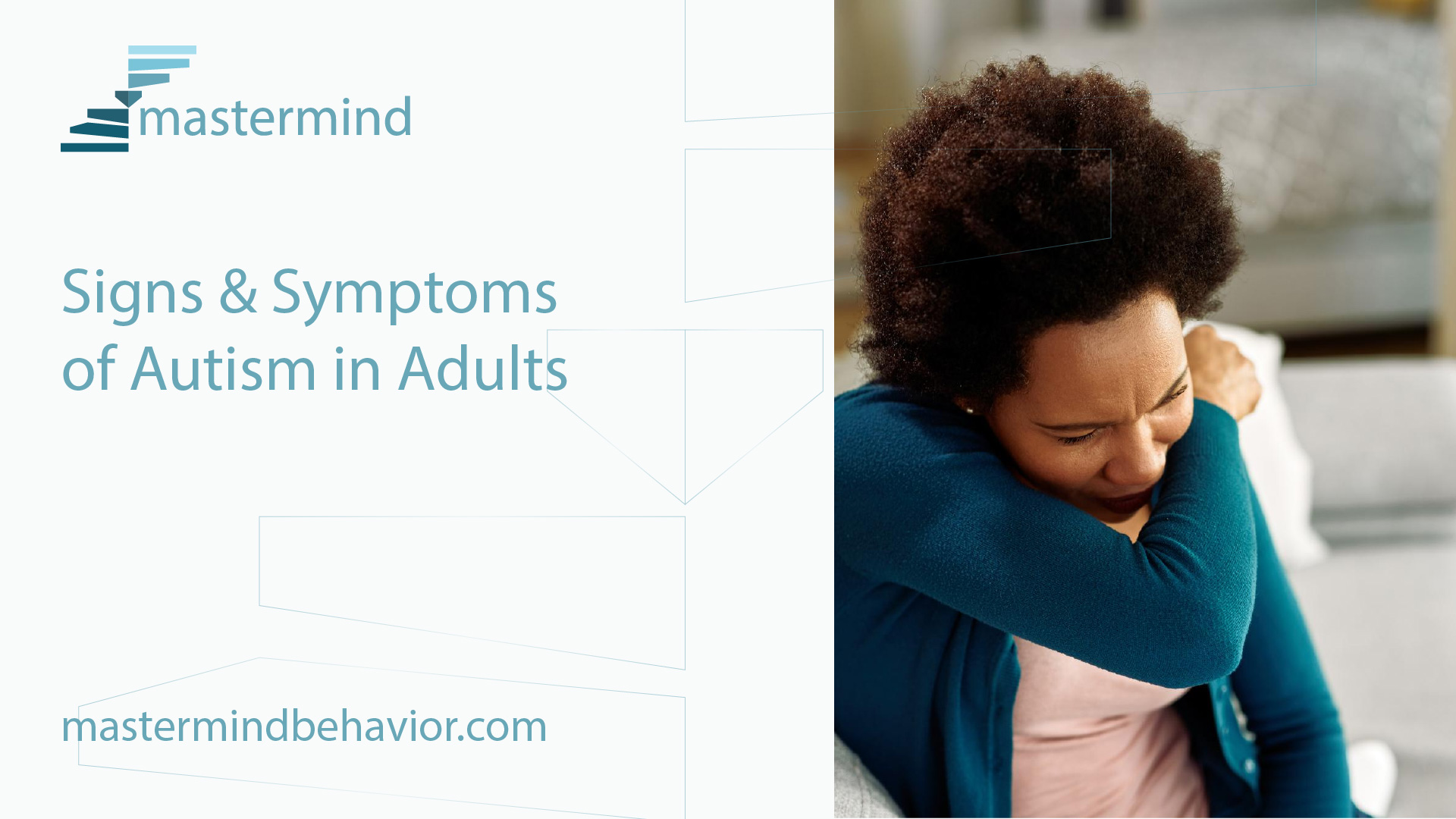Understanding sensory sensitivity with support from Autism Spectrum Therapies
Comprehending the Impact of Behavioral Autism on Every Day Life and Social Interactions
You might not realize just how deeply behavioral autism impacts everyday life and social interactions. Individuals on the spectrum frequently navigate a world filled with communication hurdles and sensory overload. These obstacles can lead to frustration and isolation, impacting their relationships and total well-being.
Defining Behavior Autism and Its Attributes
Behavior autism, frequently described as autism spectrum problem (ASD), includes a series of conditions identified by challenges in social communication, communication, and recurring behaviors. You may discover that people with ASD frequently struggle to translate social cues, which can cause misunderstandings in conversations. They might find it tough to establish eye get in touch with or involve in small talk, making social scenarios feel frustrating.
Communication problems can materialize in different means, from postponed speech growth to a choice for using fewer words. By recognizing these characteristics, you can promote a setting that advertises approval and encourages efficient communication, assisting individuals with autism prosper in their day-to-day communications.
The Spectrum of Autism: Recognizing Variability in Behavior
Autism spectrum problem (ASD) isn't a one-size-fits-all medical diagnosis; it varies extensively amongst people. You may observe that some people with ASD display moderate signs, while others may deal with a lot more considerable difficulties. This variability can manifest in behaviors, interests, and sensory level of sensitivities. You might run into people that are highly verbal and involve quickly in conversations, while others might choose solitary tasks or communicate non-verbally.
Additionally, the way individuals with ASD react to sensory input can differ greatly; some may be overwhelmed by brilliant lights or loud sounds, whereas others prosper in promoting settings. The range also consists of differences in social communications; some individuals might have a hard time to interpret social signs, while others navigate social setups with family member convenience. Recognizing this variability is essential, as it aids you appreciate everyone's distinct experience and dressmaker support to their particular demands, promoting a much more inclusive setting for everyone.
Interaction Obstacles Dealt With by People With Autism
When you communicate with people on the autism spectrum, you may see their distinct interaction challenges. They commonly face troubles with both nonverbal and verbal signs, which can impact their social communications. Understanding these barriers is crucial for fostering much better links and support.

Verbal Communication Difficulties
Several individuals on the autism range experience spoken interaction difficulties that can significantly affect their day-to-day interactions. You might find it challenging to express your ideas, sensations, or needs clearly. This can cause disappointment for both you and those around you, as misconceptions take place. You might have problem with initiating conversations, preserving a topic, or recognizing subtleties in speech. Often, you might choose utilizing straightforward language or recurring phrases, which can limit your ability to participate in deeper discussions. Your rate, tone, or quantity may not straighten with social assumptions, triggering others to misunderstand your intentions. Recognizing these challenges can help you and your support network establish approaches to boost communication and promote better connections with others in your every day life.
Nonverbal Interaction Barriers
Verbal communication isn't the only obstacle people on the autism range face; nonverbal interaction obstacles can be simply as significant. These difficulties can lead to misunderstandings or misconceptions of social hints, making communications really feel complex or frustrating. By dealing with nonverbal communication, you can discover methods to boost your social experiences and enhance your overall high quality of life.
Social Communication Impacts
Social interactions can typically really feel overwhelming as a result of the unique communication difficulties dealt with by people with autism. You could fight with translating social hints, making it hard to understand sarcasm or body language. This can result in misunderstandings or uncomfortable moments in conversations. Additionally, initiating and maintaining discussions might feel difficult, triggering anxiety in social situations. You may prefer organized settings, making spontaneous communications unpleasant. It's likewise common to experience difficulty in taking part in tiny talk, which can prevent developing brand-new relationships. Acknowledging these challenges can help you locate approaches to enhance communication, such as practicing social abilities in secure settings or using visual help - Aba Therapist. Comprehending your needs allows you to navigate social communications with higher self-confidence and simplicity.
Social Communication and Connection Building in Autism
While building partnerships can be challenging for individuals with autism, recognizing their distinct viewpoints and interaction designs can foster meaningful connections. You may notice that several individuals on the range prefer direct interaction and may have problem with social cues or little talk. By being uncomplicated in your interactions, you can assist develop an environment where they feel comfy.
Make the effort to observe and pay attention how they reveal themselves. This understanding can direct you in guiding discussions much more properly. Engaging in shared interests can likewise serve as a bridge to deeper connections. Whether it's a leisure activity, a favorite show, or a shared enthusiasm, these usual strings can open doors to friendship.
Life Routine: Navigating Approaches and obstacles
Navigating daily life regimens can be specifically challenging for individuals with autism, specifically when unanticipated modifications happen. To navigate these obstacles, take into consideration carrying out visual timetables or checklists.
Establishing a regimen that includes sensory breaks can also be advantageous. You can intend time-outs throughout your day to recharge. It's vital to interact with those around you, allowing them recognize your choices and demands. This aids produce an understanding setting.
Lastly, technique mindfulness methods to take care of tension and anxiety. Easy breathing workouts or grounding strategies can make a useful site significant distinction. By incorporating these methods, you can boost your everyday regimen and minimize interruptions, making life really feel more workable.
Toughness and Abilities of Individuals on the Autism Range
Understanding day-to-day live regimens is simply one aspect of the autism experience. Many individuals on the autism range have amazing toughness and abilities that set them apart. You could find that your attention to detail is remarkable, enabling you to succeed in tasks that need accuracy and emphasis. Your capacity to think outside the box can cause cutting-edge remedies in various situations.
Moreover, your memory skills typically radiate, particularly in locations of passion. Autism Behavioral Therapy. This propensity for maintaining details can make you an important source in areas like art, technology, or science. You might also display strong visual thinking, allowing you to envision complicated concepts and solve troubles artistically
Furthermore, your distinct perspective on the globe can promote empathy and understanding in others, enriching social communications. Accepting these strengths not just enhances your confidence but additionally assists others appreciate the varied skills you bring to the table.
Developing Inclusive Environments for People With Autism
Creating comprehensive environments for people with autism starts with creating sensory-friendly areas that provide to their special needs. You can additionally promote opportunities for social communication, helping to construct connections and friendships. By making these adjustments, you'll add to a more welcoming ambience for everybody.
Creating Sensory-Friendly Spaces
While creating sensory-friendly rooms, it's important to review the special demands of individuals with autism. Beginning by choosing soothing colors and soft illumination to develop a relaxing setting. Incorporate silent areas where individuals can pull away and recharge when overwhelmed. You'll wish to minimize loud noises and distractions, using soundproof materials or white noise makers to aid maintain tranquility. Consider responsive components like soft textiles or fidget-friendly objects that can supply convenience. Ascertain that spaces are flexible, permitting simple reformation to suit various tasks. Ultimately, consist of aesthetic schedules or clear signage to help people browse the room with confidence. By attentively integrating these elements, you can develop a welcoming ambience that supports sensory needs and promotes overall health.
Promoting Social Communication Opportunities
Creating sensory-friendly spaces not only addresses specific comfort yet also establishes the stage for purposeful social interactions amongst individuals with autism. To advertise these communications, develop comprehensive atmospheres that invite engagement. Arrange structured activities, like art classes or team video games, that encourage partnership without frustrating sensory input. Use aesthetic aids and clear communication to aid everybody engage comfortably. Urge peer mentoring, combining individuals with autism with encouraging peers who can guide them via social situations. In addition, think about hosting normal community occasions that celebrate neurodiversity, cultivating acceptance and understanding amongst all participants. By implementing these approaches, you can improve social opportunities, aiding individuals with autism develop friendships and enhance their social abilities in a risk-free, inviting atmosphere.

Frequently Asked Concerns
Exactly How Can Pals Assistance Someone With Behavioral Autism?
You can support a pal with behavior autism by holding your horses, listening actively, and valuing their borders. Participate in activities they appreciate, interact honestly, and develop a comfortable environment where they really feel valued and comprehended.
What Resources Are Readily Available for Moms And Dads of Children With Autism?
You can discover various sources for moms and dads of kids with autism, consisting of assistance teams, instructional internet sites, and regional social work. Getting in touch with other moms and dads can likewise provide valuable understandings and shared experiences to help browse difficulties.
Can Behavioral Autism Change With Time?

Yes, behavioral autism can transform in time. You might observe shifts in find more info communication, social abilities, and actions as your child grows. Early treatment and assistance commonly play essential functions in these developmental modifications.
Just How Do Sensory Sensitivities Affect Day-to-day Live?
Sensory sensitivities can make day-to-day experiences overwhelming. You may have problem with intense lights or loud noises, resulting in stress or avoidance. Locating settings that accommodate your requirements can greatly improve your convenience and total life.
What Prevail Misconceptions Concerning Behavioral Autism?
You might believe behavior autism just influences interaction skills, however it's even more complicated. Several assume individuals lack empathy or intelligence, which isn't true. Recognizing these misunderstandings aids foster approval and assistance for those on the range.
Behavior autism, frequently referred to as autism spectrum condition (ASD), includes a variety of problems defined by difficulties in social communication, interaction, and recurring actions.Social communications can often feel overwhelming due to the distinct communication challenges dealt with by individuals with autism.Designing sensory-friendly spaces not just addresses specific convenience yet additionally this establishes the stage for purposeful social communications amongst individuals with autism. Urge peer mentoring, matching individuals with autism with supportive peers who can guide them through social scenarios. By implementing these techniques, you can boost social chances, assisting individuals with autism build relationships and reinforce their social abilities in a safe, welcoming setting.